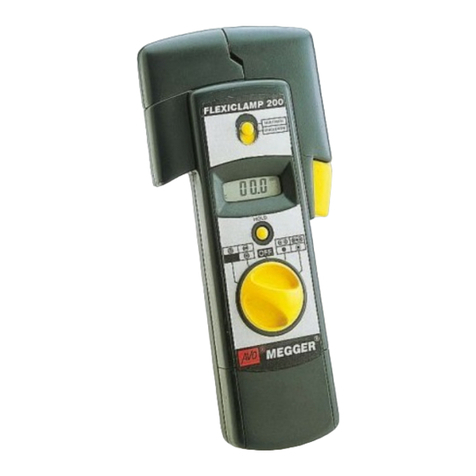
OPERATION
When measuring high ac and de voltages (sayabove
SOOV)
unless the common negative terminal is either earthy
or
connected to earth, errors
will
be introduced if the instru-
ment is touched during a reading.
On
de ranges, the meter consumes only 50 microamps at
full scale deflection corresponding
to
20,0000/V. In the
case
of
ac
ranges above 1
OV,
full scale deflection is ob-
tained
with
a consumption
of
0.5mA
(20000/V).
The
1
OV
range is 1
0000/V.
The 3V
ac
range consumes 1
OmA
at
full scale deflection. The meter maintains a high degree
of
accuracy for audio frequency tests
up
to
15kHz on
ranges up to 300V
ac.
All current consuming voltmeters,
however sensitive, draw current to varying degrees from
the circuit under test, thus causing the voltage to fall at
the point
of
measurement.
Owing to the high sensitivity
of
the Model 8 on de ranges.
this effect is unlikely
to
be
of
importance except in a very
few
instances.
It
might effect the measurement
of
e.h.t.
voltage on a television set or the tapping on a potential
divider, where the resistances
are
comparable with the
resistance
of
the meter on the range in
use.
It
is generally
possible to
use
a meter on a higher range than absolutely
necessary where the higher meter resistance causes less
disturbance.
At
the
same
time adequate pointer deflection
for reasonable accuracy should
be
attained.
4
When
it
is essential
to
obtain
an
accurate indication
of
the
voltage developed across a high value resistor
it
is some-
times preferable
to
insert the meter in series
with
it
and
to
measure the current flowing. The reading in milliamps,
multiplied by the value
of
the resistance in thousands
of
ohms,
will
give the developed voltage.
RESISTANCE
MEASUREMENT
There
are
three self-contained ranges covering from 1 ohm
to 20 megohms and provision is made for upward ex-
tension
of
these limits.
On resistance ranges, the meter must
have,
in addition
to
the normal instrument zero a resistance zero corresponding
to
the full scale deflection
of
the meter. Before carrying
out
tests for resistance, a check should be carried
out
to
ensure that the meter actually indicates zero ohms irres-
pective
of
the condition
of
the battery (within the limits
of adjustment described later).
The accuracy, should
be
within
3%
of
the reading about
centre scale. increasing
up
to about 10%
of
the indication
around deflections corresponding
to
10% and
90%
of
full scale deflection.
Resistance tests should neverbe carried
out
on components
which are already carrying current.





























